- Texas Go Math
- Big Ideas Math
- Engageny Math
- McGraw Hill My Math
- enVision Math
- 180 Days of Math
- Math in Focus Answer Key
- Math Expressions Answer Key
- Privacy Policy

McGraw Hill My Math Grade 4 Chapter 5 Lesson 3 Answer Key Use the Distributive Property to Multiply
All the solutions provided in McGraw Hill Math Grade 4 Answer Key PDF Chapter 5 Lesson 3 Use the Distributive Property to Multiply will give you a clear idea of the concepts.
McGraw-Hill My Math Grade 4 Answer Key Chapter 5 Lesson 3 Use the Distributive Property to Multiply
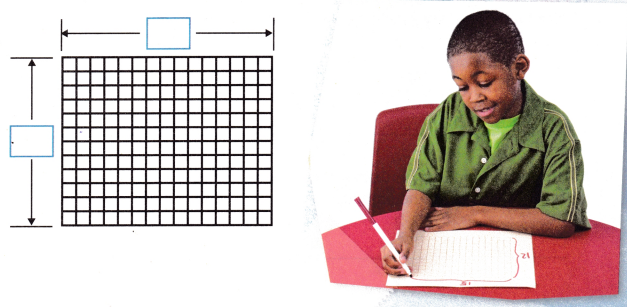
Talk About It
Question 1. Mathematical PRACTICE 7 Identify Structure How would you use the Distributive Property to find 12 × 18? Then find the product.
Answer: Using the distributive property, the product of 12 x 18 is 216. Explanation: Given that, the value is 12 x 18. Now, we will find the value using the distributive property. So, the given value is distributive as, 12 x 18 = 12 x( 10 + 8) = 12 x 10 + 12 x 8 = 120 + 96 = 216. Hence, the product of the given values is 216.
Question 2. How would you use the Distributive Property to find 14 × 17? Then find the product.
Answer: Using the distributive property, the product of 14 x 17 is 238. Explanation: Given that, the value is 14 x 17. Now, we will find the value using the distributive property. So, the given value is distributive as, 14 x 17 = 14 x( 10 + 7) = 14 x 10 + 14 x 7 = 140 + 98 = 238. Hence, the product of the given values is 238.
Practice It
Draw an area model. Then use the Distributive Property to find each product
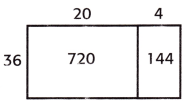
Question 4. Find 47 × 19. 47 × 19 = 47 × (10 + 9) = (47 × ____) + (47 × ____) = ____ + ____ = ______
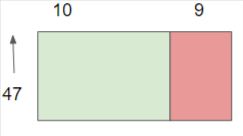
Question 5. Find 52 × 11. 52 × 11 = ___ × (___ + _____) = (_____ × ____) + (_____ × ____) = _____ × ____ = _______
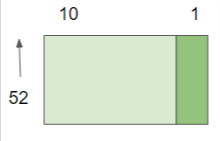
Question 6. Find 46 × 22. 46 × 22 = ____ × (____ + ____) = (____ × ____) + (____ × ____) = ____ × ____ = ______
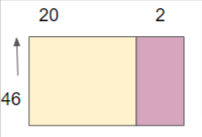
Use the Distributive Property to solve.
Question 7. Mathematical PRACTICE 7 Identify Structure There are 15 types of animals in each part of the zoo. The zoo has 12 parts. How many types of animals are there in all?
Answer: 180 types of animals are there in all. Explanation: There are 15 types of animals in each part of the zoo. The zoo has 12 parts. Now, we will find out how many types of animals are there in all. So, the values are 15 and 12. Using the distributive property, distribute the values. 15 x 12 = 15 x ( 10 + 2) = 15 x 10 + 15 x 2 = 150 + 30 = 180. Therefore, 180 types of animals are there in all.

Answer: Using the distributive property, the product of 12 x 17 is 204. Explanation: Given that, the value is 12 x 17. Now, we will find the value using the distributive property. So, the given value is distributive as, 12 x 17 = 12 x ( 10 + 7) = 12 x 10 + 12 x 7 = 120 + 84 = 204. Hence, the product of the given values is 204.
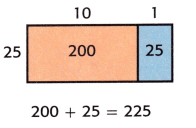
Write About It

McGraw Hill My Math Grade 4 Chapter 5 Lesson 3 My Homework Answer Key
Draw an area model. Then use the Distributive Property to find each product.
Question 1. 73 × 34 = ____ 73 × 34 = 73 × (30 + 4) = (73 × ___) + (73 × ____) = _____ + _____ = _______

Question 2. 82 × 22 = _____ 82 × 22 = 82 × (20 + 2) = (82 × ___) + (82 × ____) = _____ + ____ = _____
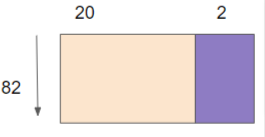
Question 3. 18 × 39 = ____ 18 × 39 = ____ ×(____ + ____) = (______ × _____) + (______ × _____) = ______ × _____ = _______

Problem Solving
Question 4. There are 48 nails in one box. How many nails are in 17 boxes? _____ nails. 17 × 48 = ____ × (____ + ____) = (______ × _____) + (______ × _____) = ______ × _____ = _______
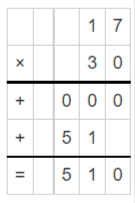
Question 5. Each notebook has 64 pages. How many total pages are there in 33 notebooks? _____ pages 33 × 64 = ____ × (____ + ____) = (______ × _____) + (______ × _____) = ______ × _____ = _______

Question 6. Each jar contains 55 buttons. There are 16 jars on the shelf. How many buttons are there altogether? ____ buttons
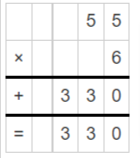
Leave a Comment Cancel Reply
You must be logged in to post a comment.
[FREE] Fun Math Games & Activities Packs
Always on the lookout for fun math games and activities in the classroom? Try our ready-to-go printable packs for students to complete independently or with a partner!
In order to access this I need to be confident with:
Distributive property
Here you will learn about the distributive property, including what it is, and how to use it to solve problems.
Students will first learn about the distributive property as part of operations and algebraic thinking in 3rd grade.
What is the distributive property?
The distributive property states that multiplying the sum of two or more numbers is the same as multiplying the addends separately.
For example,
When multiplying 2 \times 8, you can break 8 up into 2 + 6.

The distributive property says that you can multiply the parts separately and then add the products together.

Any way you solve the equivalent expressions, the product is the same.

For most expressions, there is more than one way to use the distributive property.
When multiplying 2 \times 8, you can break 8 up into 5 + 3.

[FREE] Distributive Property Worksheet (Grade 1 to 3)
Use this worksheet to check your grade 1 to 3 students’ understanding of the distributive property. 15 questions with answers to identify areas of strength and support!
Common Core State Standards
How does this relate to 3rd grade math?
- Grade 3 – Operations and Algebraic Thinking (3.OA.B.5) Apply properties of operations as strategies to multiply and divide. Examples: If 6 \times 4 = 24 is known, then 4 \times 6 = 24 is also known. (Commutative property of multiplication.) 3 \times 5 \times 2 can be found by 3 \times 5 = 15, then 15 \times 2 = 30, or by 5 \times 2 = 10, then 3 \times 10 = 30. (Associative property of multiplication.) Knowing that 8 \times 5 = 40 and 8 \times 2 = 16, one can find 8 \times 7 as 8 \times (5 + 2) = (8 \times 5) + (8 \times 2) = 40 + 16 = 56. (Distributive property.)
How to use the distributive property
In order to use the distributive property:
Identify an equation multiplying two numbers.
Show one of the numbers being multiplied as a sum of numbers.
Multiply each number in the sum.
Add the partial products together to find the final product.
Distributive property examples
Example 1: distributive property with basic facts.
Show how to solve 3 \times 5 using the distributive property.
You can use the distributive property with 3 \times 5, since it is multiplication.
2 Show one of the numbers being multiplied as a sum of numbers.
Either number can be used, but for this example let’s break up 5 into 4 + 1.
3 \times 5=3 \times(4+1)
3 Multiply each number in the sum.
\begin{aligned} & 3 \times(4+1) \\\\ & =(3 \times 4)+(3 \times 1) \\\\ & =12+3 \end{aligned}
4 Add the partial products together to find the final product.
12 + 3 = 15
3 \times 5=15 can be solved using the distributive property.
Example 2: distributive property with basic facts
Show how to solve 12 \times 9 using the distributive property.
You can use the distributive property with 12 \times 9, since it is multiplication.
Either number can be used, but for this example let’s break up 9 into 3 + 3 + 3.
12 \times 9=12 \times(3+3+3)
\begin{aligned} & 12 \times(3+3+3) \\\\ & =(12 \times 3)+(12 \times 3)+(12 \times 3) \\\\ & =36+36+36 \end{aligned}
36 + 36 + 36 = 108
12 \times 9=108 can be solved using the distributive property.
Example 3: distributive property with basic facts
Show how to solve 7 \times 6 using the distributive property.
You can use the distributive property with 7 \times 6, since it is multiplication.
Either number can be used, but for this example let’s break up 7 into 4 + 3.
7 \times 6=(4+3) \times 6
\begin{aligned} & (4+3) \times 6 \\\\ & =(4 \times 6)+(3 \times 6) \\\\ & =24+18 \end{aligned}
24 + 18 = 42
7 \times 6=42 can be solved using the distributive property.
Example 4: distributive property with basic facts
Show how to solve 4 \times 11 using the distributive property.
You can use the distributive property with 4 \times 11, since it is multiplication.
Either number can be used, but for this example let’s break up 11 into 10 + 1.
4 \times 11=4 \times(10+1)
\begin{aligned} & 4 \times(10+1) \\\\ & =(4 \times 10)+(4 \times 1) \\\\ & =40+4 \end{aligned}
40 + 4 = 44
4 \times 11=44 can be solved using the distributive property.
Example 5: distributive property with basic facts
Show how to solve 8 \times 5 using the distributive property.
You can use the distributive property with 8 \times 5, since it is multiplication.
Either number can be used, but for this example let’s break up 8 into 2 + 6.
8 \times 5=(2+6) \times 5
\begin{aligned} & (2+6) \times 5 \\\\ & =(2 \times 5)+(6 \times 5) \\\\ & =10+30 \end{aligned}
10 + 30 = 40
8 \times 5=40 can be solved using the distributive property.
Example 6: distributive property with basic facts
Show how to solve 3 \times 12 using the distributive property.
You can use the distributive property with 3 \times 12, since it is multiplication.
Either number can be used, but for this example let’s break up 12 into 1 + 1 + 10.
3 \times 12=3 \times(1+1+10)
\begin{aligned} & 3 \times(1+1+10) \\\\ & =(3 \times 1)+(3 \times 1)+(3 \times 10) \\\\ & =3+3+30 \end{aligned}
3 + 3 + 30 = 36
3 \times 12=36 can be solved using the distributive property.
Teaching tips for the distributive property
- Intentionally choose practice problems that lend themselves to being solved with the distributive property, as it is not always necessary or useful in all solving situations.
- Instead of just giving students the distributive property definition, draw attention to examples of the distributive property as they come up in daily math activities. You may even keep an anchor chart of different examples. Over time, students will start using it and recognizing it on their own and then you can introduce them to the property and its official definition through their own examples.
- Include plenty of student discourse around this topic to ensure that students understand that breaking apart a number and then multiplying it in parts does not change the total product. This could include students sharing their thinking or critiquing the thinking of others.
Easy mistakes to make
- Thinking there is only one way to use the distributive property to solve Often, there is more than one way to use the distributive property when solving. For example, \begin{aligned} & 4 \times 5 \hspace{4.65cm} 4 \times 5 \\ & =(2+2) \times 5 \hspace{3.5cm} =(1+3) \times 5 \\ & =(2 \times 5)+(2 \times 5) \hspace{1cm} \text{ OR } \hspace{1cm} =(1 \times 5)+(3 \times 5) \\ & =10+10 \hspace{3.9cm} =5+15 \\ & =20 \hspace{4.63cm} =20 \end{aligned}
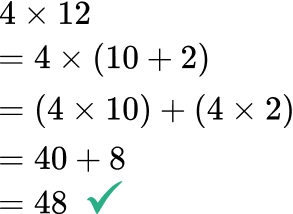
Related properties of equality lessons
- Properties of equality
- Order of operations
- Associative property
- Commutative property
Practice distributive property questions
1. Which of the following equations shows 12 \times 6 using the distributive property?

The numbers are being multiplied, so the distributive property can be used.
2. Which of the following equations shows 7 \times 9 using the distributive property?
3. Which of the following equations shows 11 \times 8 using the distributive property?
4. Which of the following equations shows 3 \times 7 using the distributive property?
5. Which of the following equations is NOT a way to solve 10 \times 5 using the distributive property?
This strategy is NOT a way to solve with the distributive property.
All the other equations break 10 or 5 up into a sum and add the products of the parts, using the distributive property correctly:

6. Which of the following equations is NOT a way to solve 9 \times 8 using the distributive property?
This strategy is NOT a way to solve 9 \times 8 with the distributive property.
All the other equations break 9 or 8 up into a sum and add the products of the parts, using the distributive property correctly:

Distributive property FAQs
Yes, the distributive property can be used with integers (including negative numbers) and rational numbers (including fractions and decimals), as long as the numbers are all being multiplied. In middle and high school, students will learn how to use the distributive property with any real number and/or algebraic expression.
No, even though the associative property also uses parentheses, they are different properties. The associative property says you can change the grouping of numbers when adding or multiplying and the sum or product will be the same. This is different from the distributive property.
Yes, this is called the distributive property of multiplication over subtraction.
This is a general term and means the same as the distributive property.
No, because of the order of operations (or PEMDAS), the products will be found first and then added together. However, it is good practice to group each partial product with parentheses.
The next lessons are
- Addition and subtraction
- Multiplication and division
- Types of numbers
Still stuck?
At Third Space Learning, we specialize in helping teachers and school leaders to provide personalized math support for more of their students through high-quality, online one-on-one math tutoring delivered by subject experts.
Each week, our tutors support thousands of students who are at risk of not meeting their grade-level expectations, and help accelerate their progress and boost their confidence.

Find out how we can help your students achieve success with our math tutoring programs .
[FREE] Common Core Practice Tests (Grades 3 to 6)
Prepare for math tests in your state with these Grade 3 to Grade 6 practice assessments for Common Core and state equivalents.
40 multiple choice questions and detailed answers to support test prep, created by US math experts covering a range of topics!
Privacy Overview
7.3 Distributive Property
Learning objectives.
By the end of this section, you will be able to:
- Simplify expressions using the distributive property
- Evaluate expressions using the distributive property
Be Prepared 7.7
Before you get started, take this readiness quiz.
Multiply: 3 ( 0.25 ) . 3 ( 0.25 ) . If you missed this problem, review Example 5.15
Be Prepared 7.8
Simplify: 10 − ( −2 ) ( 3 ) . 10 − ( −2 ) ( 3 ) . If you missed this problem, review Example 3.51
Be Prepared 7.9
Combine like terms: 9 y + 17 + 3 y − 2 . 9 y + 17 + 3 y − 2 . If you missed this problem, review Example 2.22 .
Simplify Expressions Using the Distributive Property
Suppose three friends are going to the movies. They each need $9.25 ; $9.25 ; that is, 9 9 dollars and 1 1 quarter. How much money do they need all together? You can think about the dollars separately from the quarters.
They need 3 3 times $9 , $9 , so $27 , $27 , and 3 3 times 1 1 quarter, so 75 75 cents. In total, they need $27.75 . $27.75 .
If you think about doing the math in this way, you are using the Distributive Property.
Distributive Property
If a , b , c a , b , c are real numbers, then
Back to our friends at the movies, we could show the math steps we take to find the total amount of money they need like this:
In algebra, we use the Distributive Property to remove parentheses as we simplify expressions. For example, if we are asked to simplify the expression 3 ( x + 4 ) , 3 ( x + 4 ) , the order of operations says to work in the parentheses first. But we cannot add x x and 4 , 4 , since they are not like terms. So we use the Distributive Property, as shown in Example 7.17 .
Example 7.17
Simplify: 3 ( x + 4 ) . 3 ( x + 4 ) .
Try It 7.33
Simplify: 4 ( x + 2 ) . 4 ( x + 2 ) .
Try It 7.34
Simplify: 6 ( x + 7 ) . 6 ( x + 7 ) .
Some students find it helpful to draw in arrows to remind them how to use the Distributive Property. Then the first step in Example 7.17 would look like this:
Example 7.18
Simplify: 6 ( 5 y + 1 ) . 6 ( 5 y + 1 ) .
Try It 7.35
Simplify: 9 ( 3 y + 8 ) . 9 ( 3 y + 8 ) .
Try It 7.36
Simplify: 5 ( 5 w + 9 ) . 5 ( 5 w + 9 ) .
The distributive property can be used to simplify expressions that look slightly different from a ( b + c ) . a ( b + c ) . Here are two other forms.
Other forms
Example 7.19
Simplify: 2 ( x − 3 ) . 2 ( x − 3 ) .
Try It 7.37
Simplify: 7 ( x − 6 ) . 7 ( x − 6 ) .
Try It 7.38
Simplify: 8 ( x − 5 ) . 8 ( x − 5 ) .
Do you remember how to multiply a fraction by a whole number? We’ll need to do that in the next two examples.
Example 7.20
Simplify: 3 4 ( n + 12 ) . 3 4 ( n + 12 ) .
Try It 7.39
Simplify: 2 5 ( p + 10 ) . 2 5 ( p + 10 ) .
Try It 7.40
Simplify: 3 7 ( u + 21 ) . 3 7 ( u + 21 ) .
Example 7.21
Simplify: 8 ( 3 8 x + 1 4 ) . 8 ( 3 8 x + 1 4 ) .
Try It 7.41
Simplify: 6 ( 5 6 y + 1 2 ) . 6 ( 5 6 y + 1 2 ) .
Try It 7.42
Simplify: 12 ( 1 3 n + 3 4 ) . 12 ( 1 3 n + 3 4 ) .
Using the Distributive Property as shown in the next example will be very useful when we solve money applications later.
Example 7.22
Simplify: 100 ( 0.3 + 0.25 q ) . 100 ( 0.3 + 0.25 q ) .
Try It 7.43
Simplify: 100 ( 0.7 + 0.15 p ) . 100 ( 0.7 + 0.15 p ) .
Try It 7.44
Simplify: 100 ( 0.04 + 0.35 d ) . 100 ( 0.04 + 0.35 d ) .
In the next example we’ll multiply by a variable. We’ll need to do this in a later chapter.
Example 7.23
Simplify: m ( n − 4 ) . m ( n − 4 ) .
Notice that we wrote m · 4 as 4 m . m · 4 as 4 m . We can do this because of the Commutative Property of Multiplication. When a term is the product of a number and a variable, we write the number first.
Try It 7.45
Simplify: r ( s − 2 ) . r ( s − 2 ) .
Try It 7.46
Simplify: y ( z − 8 ) . y ( z − 8 ) .
The next example will use the ‘backwards’ form of the Distributive Property, ( b + c ) a = b a + c a . ( b + c ) a = b a + c a .
Example 7.24
Simplify: ( x + 8 ) p . ( x + 8 ) p .
Try It 7.47
Simplify: ( x + 2 ) p . ( x + 2 ) p .
Try It 7.48
Simplify: ( y + 4 ) q . ( y + 4 ) q .
When you distribute a negative number, you need to be extra careful to get the signs correct.
Example 7.25
Simplify: −2 ( 4 y + 1 ) . −2 ( 4 y + 1 ) .
Try It 7.49
Simplify: −3 ( 6 m + 5 ) . −3 ( 6 m + 5 ) .
Try It 7.50
Simplify: −6 ( 8 n + 11 ) . −6 ( 8 n + 11 ) .
Example 7.26
Simplify: −11 ( 4 − 3 a ) . −11 ( 4 − 3 a ) .
You could also write the result as 33 a − 44 . 33 a − 44 . Do you know why?
Try It 7.51
Simplify: −5 ( 2 − 3 a ) . −5 ( 2 − 3 a ) .
Try It 7.52
Simplify: −7 ( 8 − 15 y ) . −7 ( 8 − 15 y ) .
In the next example, we will show how to use the Distributive Property to find the opposite of an expression. Remember, − a = −1 · a . − a = −1 · a .
Example 7.27
Simplify: − ( y + 5 ) . − ( y + 5 ) .
Try It 7.53
Simplify: − ( z − 11 ) . − ( z − 11 ) .
Try It 7.54
Simplify: − ( x − 4 ) . − ( x − 4 ) .
Sometimes we need to use the Distributive Property as part of the order of operations. Start by looking at the parentheses. If the expression inside the parentheses cannot be simplified, the next step would be multiply using the distributive property, which removes the parentheses. The next two examples will illustrate this.
Example 7.28
Simplify: 8 − 2 ( x + 3 ) . 8 − 2 ( x + 3 ) .
Try It 7.55
Simplify: 9 − 3 ( x + 2 ) . 9 − 3 ( x + 2 ) .
Try It 7.56
Simplify: 7 x − 5 ( x + 4 ) . 7 x − 5 ( x + 4 ) .
Example 7.29
Simplify: 4 ( x − 8 ) − ( x + 3 ) . 4 ( x − 8 ) − ( x + 3 ) .
Try It 7.57
Simplify: 6 ( x − 9 ) − ( x + 12 ) . 6 ( x − 9 ) − ( x + 12 ) .
Try It 7.58
Simplify: 8 ( x − 1 ) − ( x + 5 ) . 8 ( x − 1 ) − ( x + 5 ) .
Evaluate Expressions Using the Distributive Property
Some students need to be convinced that the Distributive Property always works.
In the examples below, we will practice evaluating some of the expressions from previous examples; in part ⓐ , we will evaluate the form with parentheses, and in part ⓑ we will evaluate the form we got after distributing. If we evaluate both expressions correctly, this will show that they are indeed equal.
Example 7.30
When y = 10 y = 10 evaluate: ⓐ 6 ( 5 y + 1 ) 6 ( 5 y + 1 ) ⓑ 6 · 5 y + 6 · 1 . 6 · 5 y + 6 · 1 .
Notice, the answers are the same. When y = 10 , y = 10 ,
Try it yourself for a different value of y . y .
Try It 7.59
Evaluate when w = 3 : w = 3 : ⓐ 5 ( 5 w + 9 ) 5 ( 5 w + 9 ) ⓑ 5 · 5 w + 5 · 9 . 5 · 5 w + 5 · 9 .

Try It 7.60
Evaluate when y = 2 : y = 2 : ⓐ 9 ( 3 y + 8 ) 9 ( 3 y + 8 ) ⓑ 9 · 3 y + 9 · 8 . 9 · 3 y + 9 · 8 .
Example 7.31
When y = 3 , y = 3 , evaluate ⓐ −2 ( 4 y + 1 ) −2 ( 4 y + 1 ) ⓑ −2 · 4 y + ( −2 ) · 1 . −2 · 4 y + ( −2 ) · 1 .
Try It 7.61
Evaluate when n = −2 : n = −2 : ⓐ −6 ( 8 n + 11 ) −6 ( 8 n + 11 ) ⓑ −6 · 8 n + ( −6 ) · 11 . −6 · 8 n + ( −6 ) · 11 .
Try It 7.62
Evaluate when m = −1 : m = −1 : ⓐ −3 ( 6 m + 5 ) −3 ( 6 m + 5 ) ⓑ −3 · 6 m + ( −3 ) · 5 . −3 · 6 m + ( −3 ) · 5 .
Example 7.32
When y = 35 y = 35 evaluate ⓐ − ( y + 5 ) − ( y + 5 ) and ⓑ − y − 5 − y − 5 to show that − ( y + 5 ) = − y − 5 . − ( y + 5 ) = − y − 5 .
Try It 7.63
Evaluate when x = 36 : x = 36 : ⓐ − ( x − 4 ) − ( x − 4 ) ⓑ − x + 4 − x + 4 to show that − ( x − 4 ) = − x + 4 . − ( x − 4 ) = − x + 4 .
Try It 7.64
Evaluate when z = 55 : z = 55 : ⓐ − ( z − 10 ) − ( z − 10 ) ⓑ − z + 10 − z + 10 to show that − ( z − 10 ) = − z + 10 . − ( z − 10 ) = − z + 10 .
ACCESS ADDITIONAL ONLINE RESOURCES
- Model Distribution
- The Distributive Property
Section 7.3 Exercises
Practice makes perfect.
In the following exercises, simplify using the distributive property.
4 ( x + 8 ) 4 ( x + 8 )
3 ( a + 9 ) 3 ( a + 9 )
8 ( 4 y + 9 ) 8 ( 4 y + 9 )
9 ( 3 w + 7 ) 9 ( 3 w + 7 )
6 ( c − 13 ) 6 ( c − 13 )
7 ( y − 13 ) 7 ( y − 13 )
7 ( 3 p − 8 ) 7 ( 3 p − 8 )
5 ( 7 u − 4 ) 5 ( 7 u − 4 )
1 2 ( n + 8 ) 1 2 ( n + 8 )
1 3 ( u + 9 ) 1 3 ( u + 9 )
1 4 ( 3 q + 12 ) 1 4 ( 3 q + 12 )
1 5 ( 4 m + 20 ) 1 5 ( 4 m + 20 )
9 ( 5 9 y − 1 3 ) 9 ( 5 9 y − 1 3 )
10 ( 3 10 x − 2 5 ) 10 ( 3 10 x − 2 5 )
12 ( 1 4 + 2 3 r ) 12 ( 1 4 + 2 3 r )
12 ( 1 6 + 3 4 s ) 12 ( 1 6 + 3 4 s )
r ( s − 18 ) r ( s − 18 )
u ( v − 10 ) u ( v − 10 )
( y + 4 ) p ( y + 4 ) p
( a + 7 ) x ( a + 7 ) x
−2 ( y + 13 ) −2 ( y + 13 )
−3 ( a + 11 ) −3 ( a + 11 )
−7 ( 4 p + 1 ) −7 ( 4 p + 1 )
−9 ( 9 a + 4 ) −9 ( 9 a + 4 )
−3 ( x − 6 ) −3 ( x − 6 )
−4 ( q − 7 ) −4 ( q − 7 )
−9 ( 3 a − 7 ) −9 ( 3 a − 7 )
−6 ( 7 x − 8 ) −6 ( 7 x − 8 )
− ( r + 7 ) − ( r + 7 )
− ( q + 11 ) − ( q + 11 )
− ( 3 x − 7 ) − ( 3 x − 7 )
− ( 5 p − 4 ) − ( 5 p − 4 )
5 + 9 ( n − 6 ) 5 + 9 ( n − 6 )
12 + 8 ( u − 1 ) 12 + 8 ( u − 1 )
16 − 3 ( y + 8 ) 16 − 3 ( y + 8 )
18 − 4 ( x + 2 ) 18 − 4 ( x + 2 )
4 − 11 ( 3 c − 2 ) 4 − 11 ( 3 c − 2 )
9 − 6 ( 7 n − 5 ) 9 − 6 ( 7 n − 5 )
22 − ( a + 3 ) 22 − ( a + 3 )
8 − ( r − 7 ) 8 − ( r − 7 )
−12 − ( u + 10 ) −12 − ( u + 10 )
−4 − ( c − 10 ) −4 − ( c − 10 )
( 5 m − 3 ) − ( m + 7 ) ( 5 m − 3 ) − ( m + 7 )
( 4 y − 1 ) − ( y − 2 ) ( 4 y − 1 ) − ( y − 2 )
5 ( 2 n + 9 ) + 12 ( n − 3 ) 5 ( 2 n + 9 ) + 12 ( n − 3 )
9 ( 5 u + 8 ) + 2 ( u − 6 ) 9 ( 5 u + 8 ) + 2 ( u − 6 )
9 ( 8 x − 3 ) − ( −2 ) 9 ( 8 x − 3 ) − ( −2 )
4 ( 6 x − 1 ) − ( −8 ) 4 ( 6 x − 1 ) − ( −8 )
14 ( c − 1 ) − 8 ( c − 6 ) 14 ( c − 1 ) − 8 ( c − 6 )
11 ( n − 7 ) − 5 ( n − 1 ) 11 ( n − 7 ) − 5 ( n − 1 )
6 ( 7 y + 8 ) − ( 30 y − 15 ) 6 ( 7 y + 8 ) − ( 30 y − 15 )
7 ( 3 n + 9 ) − ( 4 n − 13 ) 7 ( 3 n + 9 ) − ( 4 n − 13 )
In the following exercises, evaluate both expressions for the given value.
If v = −2 , v = −2 , evaluate
- ⓐ 6 ( 4 v + 7 ) 6 ( 4 v + 7 )
- ⓑ 6 · 4 v + 6 · 7 6 · 4 v + 6 · 7
If u = −1 , u = −1 , evaluate
- ⓐ 8 ( 5 u + 12 ) 8 ( 5 u + 12 )
- ⓑ 8 · 5 u + 8 · 12 8 · 5 u + 8 · 12
If n = 2 3 , n = 2 3 , evaluate
- ⓐ 3 ( n + 5 6 ) 3 ( n + 5 6 )
- ⓑ 3 · n + 3 · 5 6 3 · n + 3 · 5 6
If y = 3 4 , y = 3 4 , evaluate
- ⓐ 4 ( y + 3 8 ) 4 ( y + 3 8 )
- ⓑ 4 · y + 4 · 3 8 4 · y + 4 · 3 8
If y = 7 12 , y = 7 12 , evaluate
- ⓐ −3 ( 4 y + 15 ) −3 ( 4 y + 15 )
- ⓑ −3 · 4 y + ( −3 ) · 15 −3 · 4 y + ( −3 ) · 15
If p = 23 30 , p = 23 30 , evaluate
- ⓐ −6 ( 5 p + 11 ) −6 ( 5 p + 11 )
- ⓑ −6 · 5 p + ( −6 ) · 11 −6 · 5 p + ( −6 ) · 11
If m = 0.4 , m = 0.4 , evaluate
- ⓐ −10 ( 3 m − 0.9 ) −10 ( 3 m − 0.9 )
- ⓑ −10 · 3 m − ( −10 ) ( 0.9 ) −10 · 3 m − ( −10 ) ( 0.9 )
If n = 0.75 , n = 0.75 , evaluate
- ⓐ −100 ( 5 n + 1.5 ) −100 ( 5 n + 1.5 )
- ⓑ −100 · 5 n + ( −100 ) ( 1.5 ) −100 · 5 n + ( −100 ) ( 1.5 )
If y = −25 , y = −25 , evaluate
- ⓐ − ( y − 25 ) − ( y − 25 )
- ⓑ − y + 25 − y + 25
If w = −80 , w = −80 , evaluate
- ⓐ − ( w − 80 ) − ( w − 80 )
- ⓑ − w + 80 − w + 80
If p = 0.19 , p = 0.19 , evaluate
- ⓐ − ( p + 0.72 ) − ( p + 0.72 )
- ⓑ − p − 0.72 − p − 0.72
If q = 0.55 , q = 0.55 , evaluate
- ⓐ − ( q + 0.48 ) − ( q + 0.48 )
- ⓑ − q − 0.48 − q − 0.48
Everyday Math
Buying by the case Joe can buy his favorite ice tea at a convenience store for $1.99 $1.99 per bottle. At the grocery store, he can buy a case of 12 12 bottles for $23.88 . $23.88 .
ⓐ Use the distributive property to find the cost of 12 12 bottles bought individually at the convenience store. (Hint: notice that $1.99 $1.99 is $2 − $0.01 . $2 − $0.01 . )
ⓑ Is it a bargain to buy the iced tea at the grocery store by the case?
Multi-pack purchase Adele’s shampoo sells for $3.97 $3.97 per bottle at the drug store. At the warehouse store, the same shampoo is sold as a 3-pack 3-pack for $10.49 . $10.49 .
ⓐ Show how you can use the distributive property to find the cost of 3 3 bottles bought individually at the drug store.
ⓑ How much would Adele save by buying the 3-pack 3-pack at the warehouse store?
Writing Exercises
Simplify 8 ( x − 1 4 ) 8 ( x − 1 4 ) using the distributive property and explain each step.
Explain how you can multiply 4 ( $5.97 ) 4 ( $5.97 ) without paper or a calculator by thinking of $5.97 $5.97 as 6 − 0.03 6 − 0.03 and then using the distributive property.
ⓐ After completing the exercises, use this checklist to evaluate your mastery of the objectives of this section.
ⓑ What does this checklist tell you about your mastery of this section? What steps will you take to improve?
As an Amazon Associate we earn from qualifying purchases.
This book may not be used in the training of large language models or otherwise be ingested into large language models or generative AI offerings without OpenStax's permission.
Want to cite, share, or modify this book? This book uses the Creative Commons Attribution License and you must attribute OpenStax.
Access for free at https://openstax.org/books/prealgebra-2e/pages/1-introduction
- Authors: Lynn Marecek, MaryAnne Anthony-Smith, Andrea Honeycutt Mathis
- Publisher/website: OpenStax
- Book title: Prealgebra 2e
- Publication date: Mar 11, 2020
- Location: Houston, Texas
- Book URL: https://openstax.org/books/prealgebra-2e/pages/1-introduction
- Section URL: https://openstax.org/books/prealgebra-2e/pages/7-3-distributive-property
© Jan 23, 2024 OpenStax. Textbook content produced by OpenStax is licensed under a Creative Commons Attribution License . The OpenStax name, OpenStax logo, OpenStax book covers, OpenStax CNX name, and OpenStax CNX logo are not subject to the Creative Commons license and may not be reproduced without the prior and express written consent of Rice University.
Lesson 3 Hands On: Use the Distributive Property to Multiply
Loading ad...
- Google Classroom
- Microsoft Teams
- Download PDF
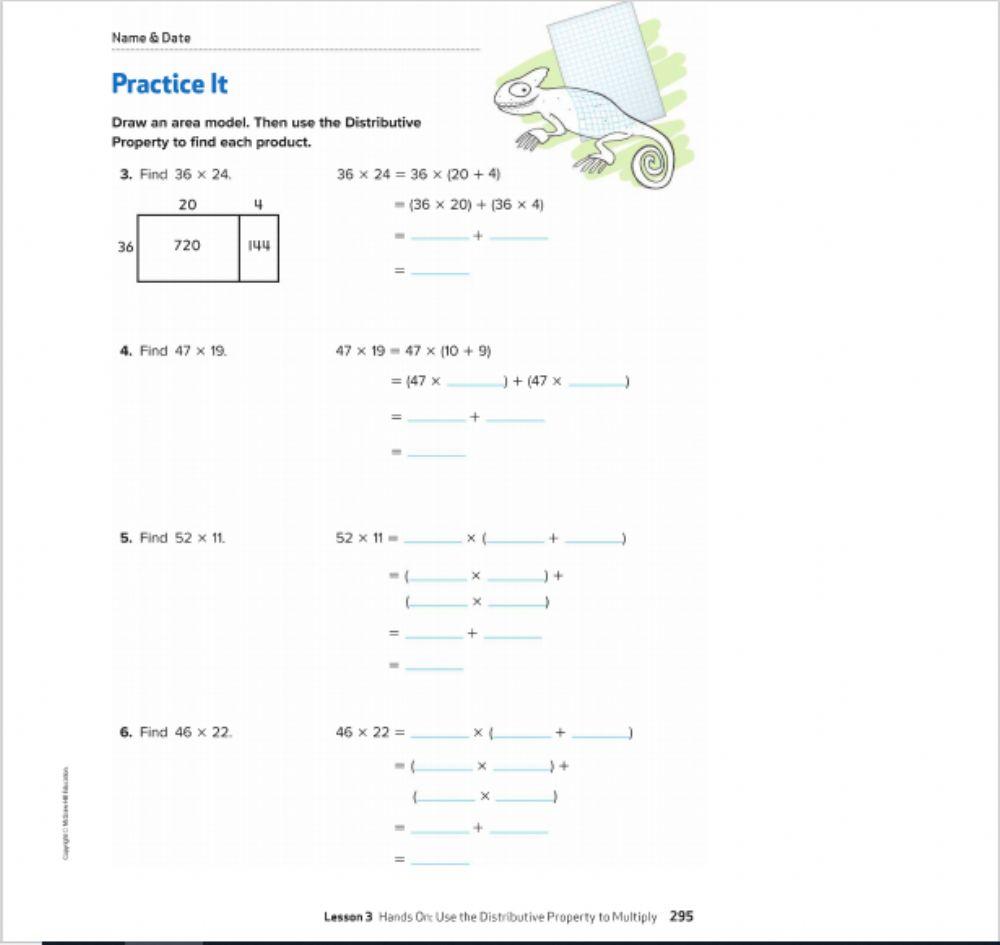
Distributive Property of Multiplication
According to the distributive property of multiplication, when we multiply a number with the sum of two or more addends, we get a result that is equal to the result that is obtained when we multiply each addend separately by the number. The distributive property of multiplication applies to the sum and the difference of two more numbers.
What is the Distributive Property of Multiplication?
The distributive property of multiplication which holds true for addition and subtraction helps to distribute the given number on the operation to solve the given equation easily. In simple words, when a number is multiplied by the sum of two numbers, then the product is the same as the product that we get when the number is distributed to the two numbers inside the brackets and multiplied by each of them separately. Let us understand this with an example. When we get an expression like 6(3 + 5), we use the order of operations by first solving the brackets and then we multiply the result with the other number in the following way: 6(3 + 5) = 6 (8) = 6 × 8 = 48.
However, when we apply the distributive property of multiplication on the same expression 6(3 + 5), we distribute the number 6 to 3 and then to 5 in the following way: (6 × 3) + (6 × 5) = 48. We get the same result with both the methods. Now, the question is, why do we use the distributive property if we get the same result by both the methods. The answer is that the distributive property is used to solve expressions that have variables instead of numbers. Since different variables cannot be added or subtracted, the distributive property helps in this case.
Distributive Property of Multiplication Formula
The formula for the distributive property of multiplication is a(b + c) = ab + ac. This formula explains that we get the same product on both sides of the equation even when we multiply 'a' with the sum of 'b' and 'c' on the left-hand-side, or, when we distribute 'a' to 'b' and then to 'c' on the right-hand-side. Observe the following formula for the distributive property of multiplication. It is to be noted that this property is applicable to addition and subtraction.

Distributive Property of Multiplication Over Addition
The distributive property of multiplication over addition states that multiplying the sum of two or more addends by a number gives the same result as multiplying each addend individually by the number and then adding or the products together. This property of multiplication over addition is used when we need to multiply a number by a sum. For example, let us solve the expression 7(9 + 3). If solve it in the usual order of operations, we will solve the brackets first and then we will multiply the number with the obtained result. 7(9 + 3) = 7(12) = 84
However, according to the distributive property of multiplication over addition, we multiply 7 by each addend. This is called distributing the number 7 to 9 and 3, and then we add each product. So, let us find the product of the distributed number: 7 × 9 and 7 × 3. This gives us: 7(9) + 7(3) = 63 + 21 = 84. This shows that we get the same product.
Observe the following equation which shows the usual method on the left-hand side and the distributive property of multiplication over addition on the right-hand side. Applying the distributive property, we distribute the number 7 to 9 and 3, then we multiply the respective numbers by 7 and add the results. In each case, the result is the same.
7(9 + 3) = 7(9) + 7(3)
7(12) = 63 + 21
Distributive Property of Multiplication Over Subtraction
The distributive property of multiplication over subtraction states that the multiplication of a number by the difference of two other numbers is equal to the difference of the products of the distributed number. The formula for the distributive property of multiplication over subtraction is: a(b - c) = ab - ac. For example, let us solve: 9(20 - 10).
Using the usual order of operations, we find the difference of the numbers given in brackets and then we multiply the result by 9.
9(20 -10) = 9(10) = 90
Now, let us use the distributive property of multiplication over subtraction to solve 9(20 - 10). We multiply 9 by each value inside the bracket and then find the difference of the products.
So, let us multiply: 9 × 20 and 9 × 10. This gives us: 9(20) - 9(10) = 180 - 90 = 90. The result is the same as the above.
Observe the following equation in which the usual method is shown on the left-hand side and the distributive property of multiplication is applied on the right-hand side. Applying the distributive property of multiplication over subtraction, we distribute the number 9 to 20 and 10, then we multiply the respective numbers by 9 and subtract the products. In both the cases, we get the same answer.
9(20 - 10) = 9(20) - 9(10)
9(10) = 180 - 90
Related Articles
Check out the following articles related to the distributive property of multiplication.
- Distributive Property Formula
- Associative Property of Multiplication
- Multiplication
Distributive Property of Multiplication Examples
Example 1: Evaluate using the distributive property of multiplication: 8(10 + 2).
Solution: We will solve the expression using the distributive property of multiplication over addition.
8(10 + 2) = 8(10) + 8(2) = 80 + 16 = 96
Example 2: Solve the expression with the help of the distributive property of multiplication: 5(9 - 4).
Solution: Using the distributive property of multiplication over subtraction,
5(9 - 4) = 5(9) - 5(4) = 45 - 20 = 25
Example 3: Solve the following by using the distributive property of multiplication: 2(12 - 8).
Solution: According to the distributive property of multiplication,
2(12 - 8) = 2(12) - 2(8) = 24 - 16 = 8
go to slide go to slide go to slide

Book a Free Trial Class
Practice Questions on Distributive Property of Multiplication
go to slide go to slide
FAQs on the Distributive Property of Multiplication
What is the distributive property of multiplication in math.
According to the distributive property of multiplication, when we multiply a number with the sum of two or more addends, we get a result that is equal to the result that is obtained when we multiply each addend separately by the number. The distributive property of multiplication applies to the sum and the difference of two more numbers . It is used to solve expressions easily by distributing a number to the numbers given in brackets. For example, if we apply the distributive property to solve the expression: 3(2 + 4), we would solve it in the following way: 3(2 + 4) = (3 × 2) + (3 × 4) = 6 + 12 = 18.
What is the Distributive Property of Multiplication Formula?
The distributive property of the multiplication formula is applied on addition and subtraction and is expressed as:
- a(b+c) = ab + bc
- a(b-c) = ab - bc
How to Solve the Distributive Property of Multiplication Over Addition?
The distributive property of multiplication over addition is used when we multiply a value by the sum of two or more numbers. For example, let us solve the expression: 5(5 + 9). This expression can be solved by multiplying 5 by both the addends. So, 5(5) + 5(9) = 25 + 45 = 70.
How to Solve Distributive Property of Multiplication Over Subtraction?
The distributive property of multiplication over subtraction is applied when we multiply a value by the difference of two numbers. For example, let us solve the expression: 3(9 - 5). The expression can be solved by multiplying 3 by each term and then find the differences of the products. So, 3(9) - 3(5) = 27 - 15 = 12.
What does Distributive Property of Multiplication Look Like?
The distributive property of multiplication can be seen with the help of its formula which is applicable to addition and subtraction in the following way:
- Distributive property of the multiplication over addition: a(b+c) = ab + bc.
- Distributive property of the multiplication over subtraction: a(b-c) = ab - bc
Give an example of the Distributive Property of Multiplication.
The distributive property of multiplication can be understood through various examples. For example, let us solve the expression 4(7 + 3). We will distribute the number 4 to 7 and 3. This will make it 4(7) + 4(3) = 28 + 12 = 40.
- Math Lessons
- For Teachers
Other Resources SAT Prep Blog
Support us merch donate.
- Other Resources
QUICK LINKS
Distributive property calculator.
Introduction
Key Steps: How to Use the Distributive Property
Expanding Using the Distributive Property
Practice: Expanding Using the Distributive Property
Factoring Using the Distributive Property
Practice: Factoring Using the Distributive Property
Back to all math lessons
Distributive Property

We can use the distributive property to expand and factor expressions.
Expanding an expression is like opening an umbrella:
We multiply each term inside the parentheses ( x + 3 y + 4 ) by the outside term 2 .
Factoring an expression is like closing an umbrella:
We divide each term in the expression 2 x + 3 y + 8 by the greatest common factor or GCF 2 . The factored expression goes inside the parentheses, and the GCF goes on the outside.
Just like how the umbrella itself doesn’t change as it opens and closes, the value of the expression remains the same whether it’s expanded or factored.
What is a term? 🙋🏿
In a mathematical expression or equation, a term can be a single number, a single variable, or numbers and variables multiplied together or divided by each other.
You can also use the Quick Links menu on the left to jump to a section of your choice.
You can also use the Quick Links dropdown above to jump to a section of your choice.
How to Use the Distributive Property
Step 1. combine any like terms., step 2. expand the expression., step 2. identify the greatest common factor (gcf) of the terms in the expression., step 3. factor the expression..
Multiplication Using the Distributive Property Lesson Plan: Mt. Multiplis
This lesson plan, adaptable for grades 3-5, features the demo version of the multiplication game, Mt. Multiplis from our partner, Teachley . This interactive game uses visual models that encourage students to think about and solve problems in different ways using the properties of multiplication, particularly the distributive property. All Teachley games are developed and supported by cognitive science research.
Lesson Plan Common Core State Standards Alignments
Students will:.
- Use effective math strategies based on mathematical properties to solve multiplication problems.
- Express their mathematical thinking using the SnapThought® tool.
- Computers or other devices with Internet access
- Interactive whiteboard
Preparation:
Preview and play Mt. Multiplis to plan how you will adapt it to your students’ needs.
For ideas on how to use SnapThought with this game, read Mt. Multiplis: SnapThought Prompts for more information and specific SnapThought prompts to provide students during game play.
- 1:1 with students and devices
- Two to three students sharing one device and swapping ideas and the device back and forth
- Station model where small groups rotate through using the devices
- The demo version that this lesson is based on includes two levels of the game.
- The first level features 5-factor problems, utilizing groups of 5.
- The second level features 4-factor problems with 4 groups of x. At this level, the game encourages students to think in terms of 2 groups of x and then double it.
Lesson Procedure:
- Play one of the recommended BrainPOP movies suggested in Preparation to build background or to make connections to prior knowledge.
- Write a simple 5-factor multiplication problem on the board, such as, “3 x 5 = _” and ask students to share how they would solve this problem. Although some may have just memorized the fact, encourage others to describe how they might solve it if they didn’t know the answer. Provide manipulatives and/or pencil and paper for students to show their strategies. After students share their ideas, model how to think think strategically about the problem by showing how 3 x 5 is the same as 2 groups of 5 plus 1 more group of 5 (10 + 5).
- Repeat step 2 but with a 4-factor problem, such as 4 x 6. Again, ask students to share how they solve the problem if they haven’t memorized the fact. Using the example from step 2, they might solve it by thinking of two groups of 6 plus another two groups (12 + 6 + 6). After students share their ideas, be sure to model the doubling strategy by showing how to double 2 groups of 6 (12 doubled) to get the answer 24.
- Click the bridge to plan it, and then again to build it.
- Drag the factor cards on the left onto the bridge area. The total is additive.
- Once you build a bridge, cross it by clicking the island you want to go to.
- Demonstrate how they can undo the last move by clicking the Undo button on the right. Or they can clear the whole bridge by clicking Reset.
- On Level 2, demonstrate how to use the Double It! button on the left side to double the planks to come up with the answer.
- Depending on your students’ needs, you can play several rounds of the game as a whole class, inviting volunteers to come up and try the different strategies.
- Now have students explore the game independently or in pairs, Allow 10-15 minutes for game play.
- If students have individual logins through My BrainPOP, encourage them to use the SnapThought® tool to take snapshots during game play, and reflect on their strategies. See Mt. Multiplis: SnapThought Prompts for suggested prompts.
- Circulate the room as students play, listening as they use or discuss their strategies, and provide help as needed.
- Bring students back to a whole class discussion and have volunteers share their strategies for game play. Ask if they used any strategies that were new for them. Ask what they liked about the strategies they used and what they didn’t like.
- Encourage students to revisit Mt. Multiplis throughout the school year to practice multiplication strategies. NOTE: The full version of the game is available at teachley.com .
Extension Activities:

- BrainPOP Jr. (K-3)
- BrainPOP ELL
- BrainPOP Science
- BrainPOP Español
- BrainPOP Français
- Set Up Accounts
- Single Sign-on
- Manage Subscription
- Quick Tours
- About BrainPOP

- Terms of Use
- Privacy Policy
- Trademarks & Copyrights
multiplication using distributive property
All Formats
Resource types, all resource types.
- Rating Count
- Price (Ascending)
- Price (Descending)
- Most Recent
Multiplication using distributive property
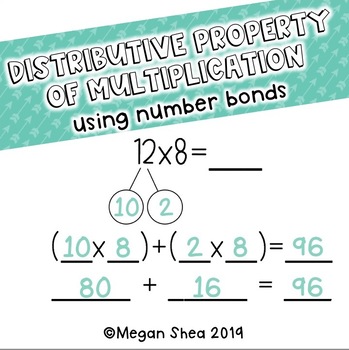
Distributive Property of Multiplication Using Number Bonds

Doodle Sheet - Distributive Property of Multiplication - EASY to Use Notes!

Distributive Property of Multiplication using Arrays: HW and Quiz included!

Distributive Property Using Number Bonds: A strategy to multiply and Divide

Using Distributive Property to Multiply Mixed Numbers by Whole Numbers

Distributive Property of Multiplication Using Models

MULTIPLY USING DISTRIBUTIVE PROPERTY Maze, Riddle, Coloring Page | PRINT DIGITAL
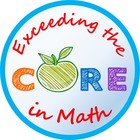
Multiplying Two Digit by Two Digit Numbers Using the Distributive Property

Distributive Property of Multiplication using "The Mouse Method"

Multiplying Using the Distributive Property
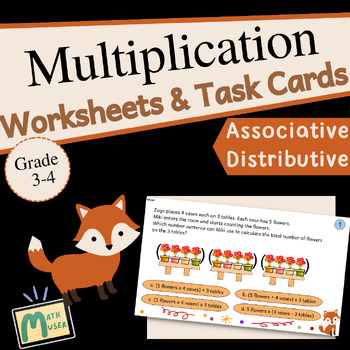
Multiplication Associative and Distributive Properties using Word Problems
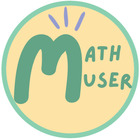
- Google Apps™
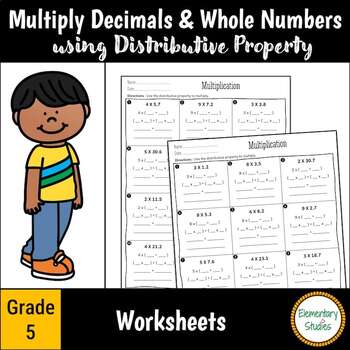
Multiply Decimals and Whole Numbers using Distributive Property

Multiplication Poster: Using the Distributive Property

Relate Multiplication to Division ( Using the Distributive Property ) Tic-Tac-Toe

Multiply Using the Distributive Property Task Cards

Multiply Using the Distributive Property

Split multiplication with Arrays using partitioning ( Distributive property )

How To: Use the Distributive Property for Multiplication

Distributive Property of Multiplication Using Number Bonds-Differentiated

Multiplying Two Digit Numbers Using the Distributive Property

Multiplication Using Area Models and Distributive Property
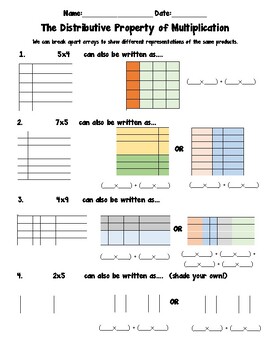
Distributive Property of Multiplication Using Arrays with Color

Boom Cards™: Using the Distributive Property to Multiply by Units 6-9 DIGITAL

- Internet Activities

Solver Title
Generating PDF...
- Pre Algebra Order of Operations Factors & Primes Fractions Long Arithmetic Decimals Exponents & Radicals Ratios & Proportions Percent Modulo Number Line Expanded Form Mean, Median & Mode
- Algebra Equations Inequalities System of Equations System of Inequalities Basic Operations Algebraic Properties Partial Fractions Polynomials Rational Expressions Sequences Power Sums Interval Notation Pi (Product) Notation Induction Logical Sets Word Problems
- Pre Calculus Equations Inequalities Scientific Calculator Scientific Notation Arithmetics Complex Numbers Polar/Cartesian Simultaneous Equations System of Inequalities Polynomials Rationales Functions Arithmetic & Comp. Coordinate Geometry Plane Geometry Solid Geometry Conic Sections Trigonometry
- Calculus Derivatives Derivative Applications Limits Integrals Integral Applications Integral Approximation Series ODE Multivariable Calculus Laplace Transform Taylor/Maclaurin Series Fourier Series Fourier Transform
- Functions Line Equations Functions Arithmetic & Comp. Conic Sections Transformation
- Linear Algebra Matrices Vectors
- Trigonometry Identities Proving Identities Trig Equations Trig Inequalities Evaluate Functions Simplify
- Statistics Mean Geometric Mean Quadratic Mean Average Median Mode Order Minimum Maximum Probability Mid-Range Range Standard Deviation Variance Lower Quartile Upper Quartile Interquartile Range Midhinge Standard Normal Distribution
- Physics Mechanics
- Chemistry Chemical Reactions Chemical Properties
- Finance Simple Interest Compound Interest Present Value Future Value
- Economics Point of Diminishing Return
- Conversions Roman Numerals Radical to Exponent Exponent to Radical To Fraction To Decimal To Mixed Number To Improper Fraction Radians to Degrees Degrees to Radians Hexadecimal Scientific Notation Distance Weight Time Volume
- Pre Algebra
- One-Step Addition
- One-Step Subtraction
- One-Step Multiplication
- One-Step Division
- One-Step Decimals
- Two-Step Integers
- Two-Step Add/Subtract
- Two-Step Multiply/Divide
- Two-Step Fractions
- Two-Step Decimals
- Multi-Step Integers
- Multi-Step with Parentheses
- Multi-Step Rational
- Multi-Step Fractions
- Multi-Step Decimals
- Solve by Factoring
- Completing the Square
- Quadratic Formula
- Biquadratic
- Logarithmic
- Exponential
- Rational Roots
- Floor/Ceiling
- Equation Given Roots
- Newton Raphson
- Substitution
- Elimination
- Cramer's Rule
- Gaussian Elimination
- System of Inequalities
- Perfect Squares
- Difference of Squares
- Difference of Cubes
- Sum of Cubes
- Polynomials
- Distributive Property
- FOIL method
- Perfect Cubes
- Binomial Expansion
- Negative Rule
- Product Rule
- Quotient Rule
- Expand Power Rule
- Fraction Exponent
- Exponent Rules
- Exponential Form
- Logarithmic Form
- Absolute Value
- Rational Number
- Powers of i
- Complex Form
- Partial Fractions
- Is Polynomial
- Leading Coefficient
- Leading Term
- Standard Form
- Complete the Square
- Synthetic Division
- Linear Factors
- Rationalize Denominator
- Rationalize Numerator
- Identify Type
- Convergence
- Interval Notation
- Pi (Product) Notation
- Boolean Algebra
- Truth Table
- Mutual Exclusive
- Cardinality
- Caretesian Product
- Age Problems
- Distance Problems
- Cost Problems
- Investment Problems
- Number Problems
- Percent Problems
- Addition/Subtraction
- Multiplication/Division
- Dice Problems
- Coin Problems
- Card Problems
- Pre Calculus
- Linear Algebra
- Trigonometry
- Conversions

Most Used Actions
Number line.
- expand\:3\times(7-4)
- expand\:4(x-5)
- expand\:-9(-5-4x)
- expand\:-5(2x+8)-6x
distributive-property-calculator
- Middle School Math Solutions – Expand Calculator, Two Squares The difference of two squares is an application of the FOIL method (refer to our blog post on the FOIL method)....
Please add a message.
Message received. Thanks for the feedback.
You are using an outdated browser and it's not supported. Please upgrade your browser to improve your experience.
- LOGIN FOR PROGRAM PARTICIPANTS
- PROGRAM SUPPORT
The Distributive Property
Description.
There may be cases when our downloadable resources contain hyperlinks to other websites. These hyperlinks lead to websites published or operated by third parties. UnboundEd and EngageNY are not responsible for the content, availability, or privacy policies of these websites.
- Grade 3 Mathematics Module 1, Topic C, Lesson 10
Related Guides and Multimedia
Our professional learning resources include teaching guides, videos, and podcasts that build educators' knowledge of content related to the standards and their application in the classroom.
There are no related guides or videos. To see all our guides, please visit the Enhance Instruction section here .
Distributive Property - Array Model
Related Topics: Lesson Plans and Worksheets for Grade 3 Lesson Plans and Worksheets for all Grades More Lessons for Grade 3 Common Core For Grade 3
Examples, solutions, and videos to help Grade 3 students learn how to model the distributive property with arrays to decompose units as a strategy to multiply.
Common Core Standards: 3.OA.1, 3.OA.5, 3.OA.3, 3.OA.4
New York State Common Core Math Grade 3, Module 1, Lesson 10
Download the Worksheets for Grade 3, Module 1, lesson 10 (pdf)
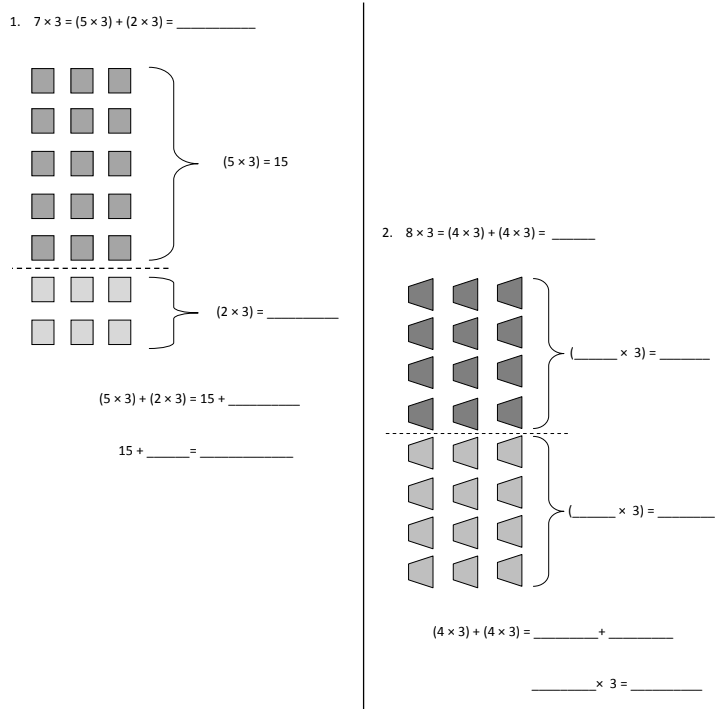
NYS Math Module 1 Grade 3 Lesson 10 Concept Development
A guitar has 6 strings. How many strings are there on 3 guitars? Draw an array to represent the total number of guitar strings. 8 × 2 = _____
NYS Math Module 1 Grade 3 Lesson 10 Problem Set
- 7 × 3 = (5 × 3) + (2 × 3) = _____ (5 × 3) + (2 × 3) = 15 + __________ 15 + ______= __________
Is (3 × 4) + (2 × 4) = 12 + 8 = 20 the same as 5 × 4?
Joe planted 6 rows of carrots in his garden. There are 6 carrots in each row. How many carrots did he plant?
NYS Math Module 1 Grade 3 Lesson 10 Homework
- 6 × 3 = __________ 12 + ______ = ______ 6 × 3 = ______
- 8 × 2 = ___ ( × 2) = __ ( × 2) = ______ (4 × 2) + (4 × 2) = ______ + ______ ____ × 2 = ________
- Adriana is organizing her books on shelves. She puts 3 books in each row. a. Use the multiplication sentences on the right to draw arrays to show the books on Adriana’s top and bottom shelves. __________× 3 = 15 __________× 3 = 3

We welcome your feedback, comments and questions about this site or page. Please submit your feedback or enquiries via our Feedback page.

IMAGES
VIDEO
COMMENTS
Chapter 5 Lesson 3 Use the Distributive Property to Multiply.How can I multiply by a two-digit number?Learn how to use the Distributive Property to find the ...
If you had something like "3 (5 + 2)", it is just as easy to add, then multiply as to apply the distributive property. However, when you start working with variables and numbers in algebra, the distributive property is often the only way to eliminate parentheses and satisfy PEMDAS requirements. You'll learn more about this when you get into ...
All the solutions provided in McGraw Hill Math Grade 4 Answer Key PDF Chapter 5 Lesson 3 Use the Distributive Property to Multiply will give you a clear idea of the concepts. McGraw-Hill My Math Grade 4 Answer Key Chapter 5 Lesson 3 Use the Distributive Property to Multiply. Draw It. Find 12 × 15. 1. Label 12 and 15 as the dimensions of the ...
New York State Common Core Math Grade 3, Module 3, Lesson 10 Worksheets for Grade 3. Application Problem. The following diagram shows how to use the distributive property to multiply and divide. Scroll down the page for more examples. Use the 5 plus something break apart and distribute strategy to solve 6 × 8. Model with a tape diagram. Note ...
The distributive property tells us how to solve expressions in the form of a (b + c). The distributive property is sometimes called the distributive law of multiplication and division. Normally when we see an expression like this …. we just evaluate what's in the parentheses first, then solve it:
Example 1: distributive property with basic facts. Show how to solve 3 \times 5 3 × 5 using the distributive property. Identify an equation multiplying two numbers. You can use the distributive property with 3 \times 5, 3 × 5, since it is multiplication. 2 Show one of the numbers being multiplied as a sum of numbers.
These strategies come from the idea that multiplication is the same as counting groups of objects (distributive property). 1) If you're good with 2's and 5's, a possible way to multiply a number by 7 is to multiply it by 2, multiply it by 5, then add the results. This is based on the fact that 2 + 5 = 7. Example: let's do 8 x 7. 8 x 2 = 16.
New York State Common Core Math Grade 3, Module 3, Lesson 6 Worksheets for Grade 3 ... Apply the distributive property to multiply using units of 6 and 7. ... Show Step-by-step Solutions. Lesson 6 Homework 1. Label the tape diagrams. Then fill in the blanks below to make the statements true. a. 6 × 7 = _____ (6 × 7) = (5 + 1) × 7
In algebra, we use the Distributive Property to remove parentheses as we simplify expressions. For example, if we are asked to simplify the expression 3(x + 4), the order of operations says to work in the parentheses first. But we cannot add x and 4, since they are not like terms. So we use the Distributive Property, as shown in Example 7.17.
ID: 1255804 Language: English School subject: Math Grade/level: 4 Age: 5-12 Main content: Lesson 3 Hands On: Use the Distributive Property to Multiply Other contents: Lesson 3 Hands On: Use the Distributive Property to Multiply Add to my workbooks (2) Embed in my website or blog Add to Google Classroom
Example 2: Solve the expression with the help of the distributive property of multiplication: 5 (9 - 4). Solution: Using the distributive property of multiplication over subtraction, 5 (9 - 4) = 5 (9) - 5 (4) = 45 - 20 = 25. Example 3: Solve the following by using the distributive property of multiplication: 2 (12 - 8).
Lesson 37 Homework 1. Draw tape diagrams to show two ways to represent 3 units of 5 1/12. Write a multiplication expression to match each tape diagram. 2. Solve the following using the distributive property. The first one has been done for you. (As soon as you are ready, you may omit the step that is in line 2.) 3. Sara's street is 2 3/10 ...
The distributive property says that multiplying a number by a group of terms being added together will give you the same answer as if you did all the multiplication separately. We can use the distributive property to expand and factor expressions. Expanding an expression is like opening an umbrella:
On the board, draw a quick picture to illustrate the word (i.e., draw a page of homework with arrows pointing from it to multiple students). Explain, "Today we are going to explore the distributive property of multiplication." Write the name of the property on the board and underline the word "distributive." Place students with a supportive ...
This lesson plan, adaptable for grades 3-5, features the demo version of the multiplication game, Mt. Multiplis from our partner, Teachley. This interactive game uses visual models that encourage students to think about and solve problems in different ways using the properties of multiplication, particularly the distributive property. All Teachley games are developed and supported...
distributive property. Students revisit the distributive property as a strategy for multiplication and division in Topics E and F. In those lessons they name the strategy with precise vocabulary as they use it. Review the vocabulary . parentheses. Exit Ticket (3 minutes) After the Student Debrief, instruct students to complete the Exit Ticket.
New York State Common Core Math Grade 3, Module 1, Lesson 16. Download the Worksheets for Grade 3, Module 1, lesson 16 (pdf) The following diagram shows how to use the distributive property as a strategy to find related multiplication facts. Lesson 16 Concept Development Problem 1: Model the 5 + n pattern as a strategy for multiplying using ...
The Distributive Property And Multiplication. Use the distributive property as a strategy to find related multiplication facts. ... module 4 - module 5 - module 6 - module 7 - Description Students examine the distributive property in greater depth. This lesson introduces the 5 + n pattern as a strategy for finding unknown facts involving 4.
Simply Mathtastic. This power point is a follow up to my "Multiplying Using the Distributive Property" powerpoint (students multiply 2 and 3 digit numbers by 1 number) which is also on TPT. In this power point, students will walk through the steps of using the distributive property to solve 2 digit by 2 digit problems.
Free Distributive Property calculator - Expand using distributive property step-by-step
The Distributive Property. Model the distributive property with arrays to decompose units as a strategy to multiply. Download Lesson. Related Resources. Math Grade 3 Curriculum Map. module 1. topic C.
Examples, solutions, and videos to help Grade 3 students learn how to model the distributive property with arrays to decompose units as a strategy to multiply. Common Core Standards: 3.OA.1, 3.OA.5, 3.OA.3, 3.OA.4. New York State Common Core Math Grade 3, Module 1, Lesson 10. Download the Worksheets for Grade 3, Module 1, lesson 10 (pdf) The ...
T: Draw the tape diagram and label units with numbers instead of stars. Label the missing total. Beneath the diagram, write a multiplication sentence. S: (Draw a tape diagram with 8 written inside both units and 16 written as the total. Beneath the diagram, they write 2 x 8 = 16.) Repeat process for 3 x 7 and 4 x 6.